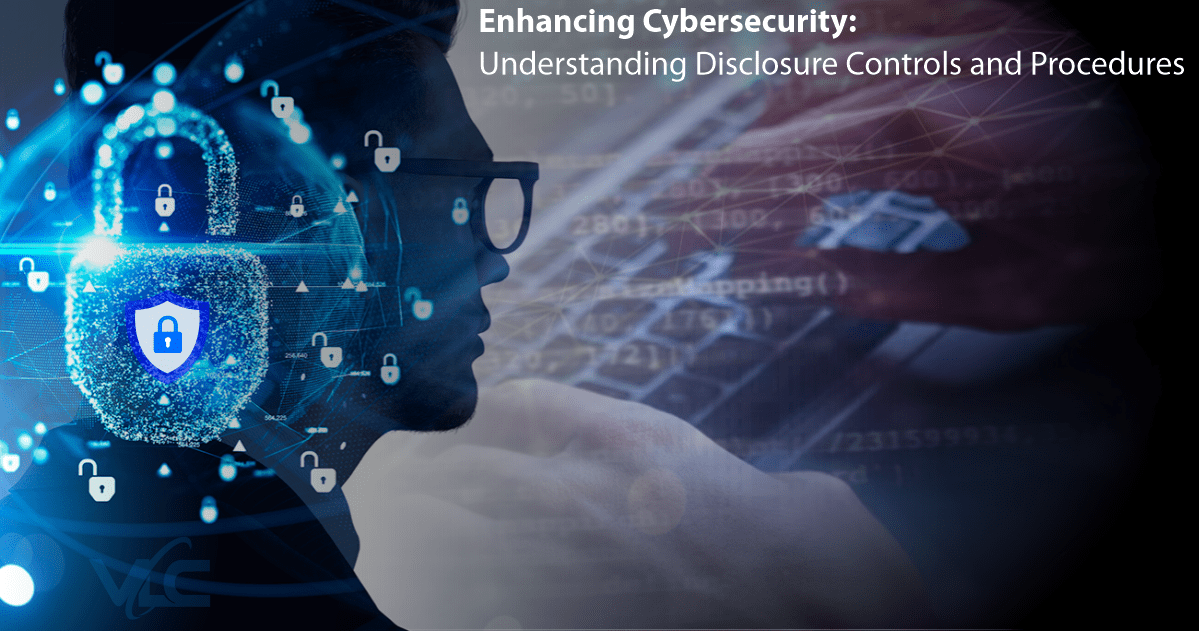Enhancing Cybersecurity: Understanding Disclosure Controls and Procedures
Cybersecurity is a paramount concern for organizations across the globe. As cyber threats evolve, they become more sophisticated and dangerous with each passing day. Companies must adopt robust cybersecurity practices to safeguard sensitive data and protect against potential breaches. One crucial aspect of this endeavor is the implementation of effective disclosure controls and procedures.
In this blog, we’ll explore the significance of disclosure controls and procedures in enhancing cybersecurity and how VLC Solutions Cybersecurity offers comprehensive solutions to tackle these challenges.
Understanding Disclosure Controls and Procedures
Disclosure controls and procedures (DCPs) refer to the internal controls that companies put in place to ensure the accuracy, reliability, and timely disclosure of financial information and other material events. These controls are designed to detect and prevent errors, unauthorized access, or fraudulent activities that might compromise the integrity of an organization’s financial statements or other disclosures. While DCPs are primarily associated with financial reporting, they also play a crucial role in safeguarding sensitive information related to cybersecurity.
Significance of DCPs in Cybersecurity
Timely Detection and Response
Effective DCPs empower organizations to promptly detect and respond to potential cybersecurity incidents. They establish a framework for monitoring and analyzing data, enabling swift identification of any abnormal activities or unauthorized access attempts.
Risk Mitigation
By ensuring accurate and timely disclosure of cybersecurity risks and incidents, DCPs help organizations manage potential legal and reputational consequences. Transparent communication with stakeholders fosters trust and allows for proactive risk mitigation.
Compliance and Regulatory Requirements
In many industries, there are specific regulatory guidelines mandating the implementation of robust cybersecurity controls. DCPs ensure that an organization complies with these regulations, avoiding penalties and legal repercussions.
Incident Investigation and Root Cause Analysis
DCPs facilitate comprehensive incident investigation and root cause analysis. Understanding the root causes of cybersecurity incidents is essential for implementing effective remediation strategies and preventing future occurrences.
Examples of Effective DCPs in Cybersecurity
Multi-Factor Authentication (MFA)
Implementing MFA across various systems and applications adds an extra layer of security, mitigating the risk of unauthorized access to sensitive data.
Data Encryption
Employing strong encryption methods for data at rest and in transit ensures that even if attackers gain access to the data, it remains unintelligible and unusable.
Regular Security Awareness Training
Educating employees about cybersecurity best practices and potential threats can help prevent phishing attacks and other social engineering techniques.
Incident Response Plan
A well-defined incident response plan ensures that an organization can quickly and effectively respond to cybersecurity incidents, minimizing their impact.
VLC Solutions Cybersecurity: Your Partner in Cyber Defense
In the realm of cybersecurity, VLC Solutions stands out as a trusted partner in safeguarding businesses against digital threats. As a leading cybersecurity solutions provider, VLC Solutions offers comprehensive services tailored to suit diverse organizational needs.
Risk Assessment and Compliance
VLC Solutions conducts thorough risk assessments and ensures compliance with industry-specific regulations, helping clients identify vulnerabilities and devise effective mitigation strategies.
Security Awareness Training
The company offers engaging and informative security awareness training programs, equipping employees with the knowledge and skills to recognize and counter cyber threats.
Incident Response and Recovery
VLC Solutions assists organizations in developing robust incident response plans, enabling them to efficiently respond to and recover from cybersecurity incidents.
Cybersecurity Technology Integration
To enhance an organization’s cyber defense capabilities, VLC Solutions offers cutting-edge cybersecurity technologies, including intrusion detection systems, advanced firewalls, and security information and event management (SIEM) solutions.
Conclusion
As cyber threats continue to evolve, disclosure controls and procedures have become a critical aspect of an organization’s cybersecurity strategy. DCPs contribute to risk mitigation, compliance, and overall cyber resilience by ensuring accurate and timely disclosure of cybersecurity risks and incidents. VLC Solutions Cybersecurity emerges as a reliable partner, offering a wide array of services to address the unique challenges of modern-day cybersecurity. Embrace our holistic cybersecurity solutions to fortify your digital defenses and protect sensitive data from potential breaches.
